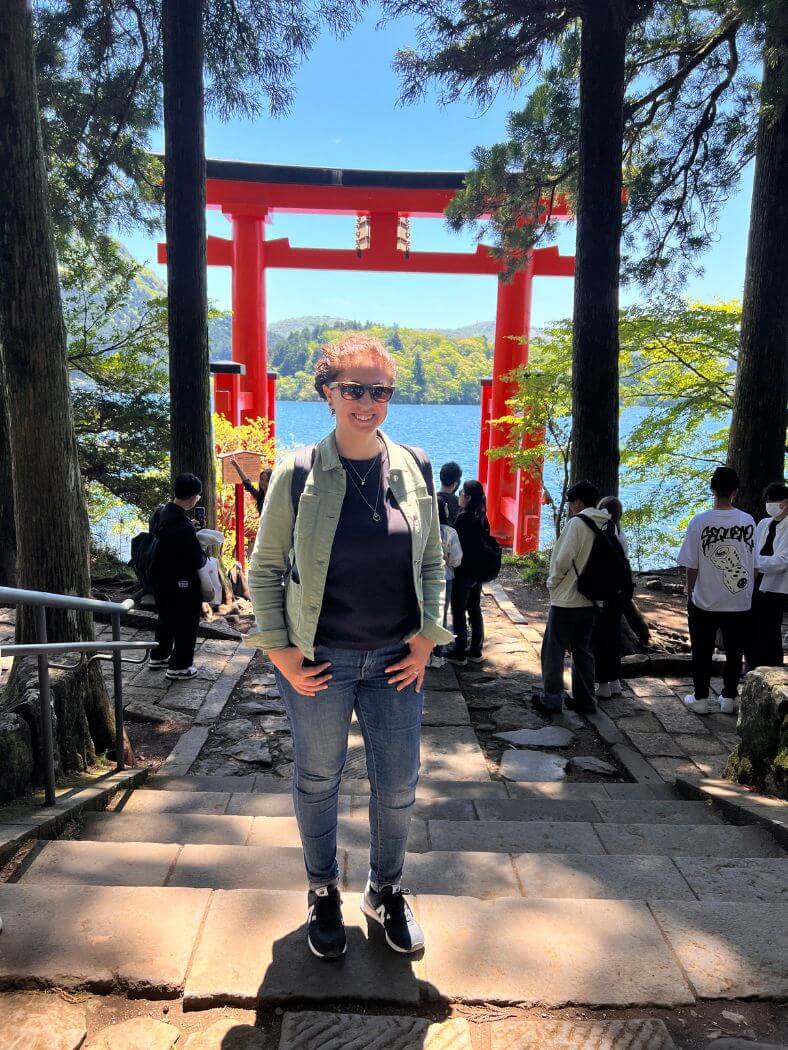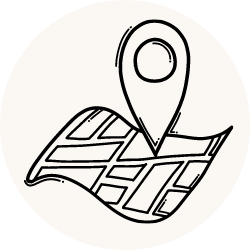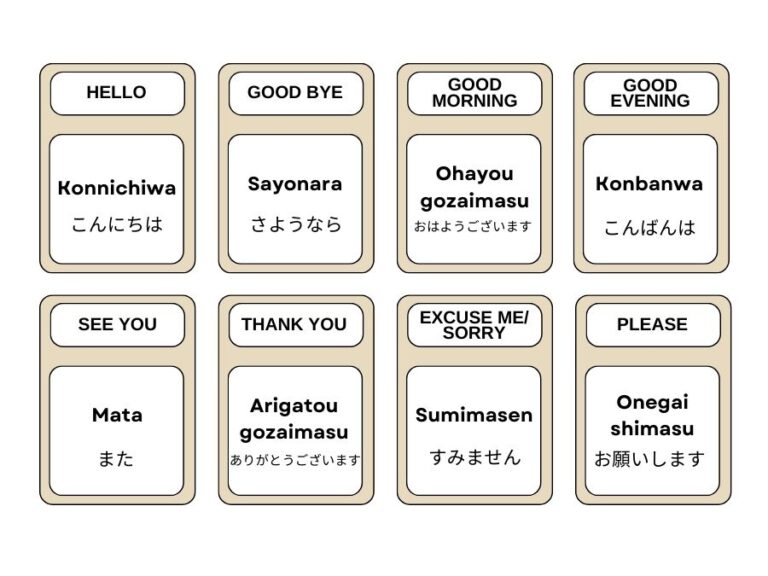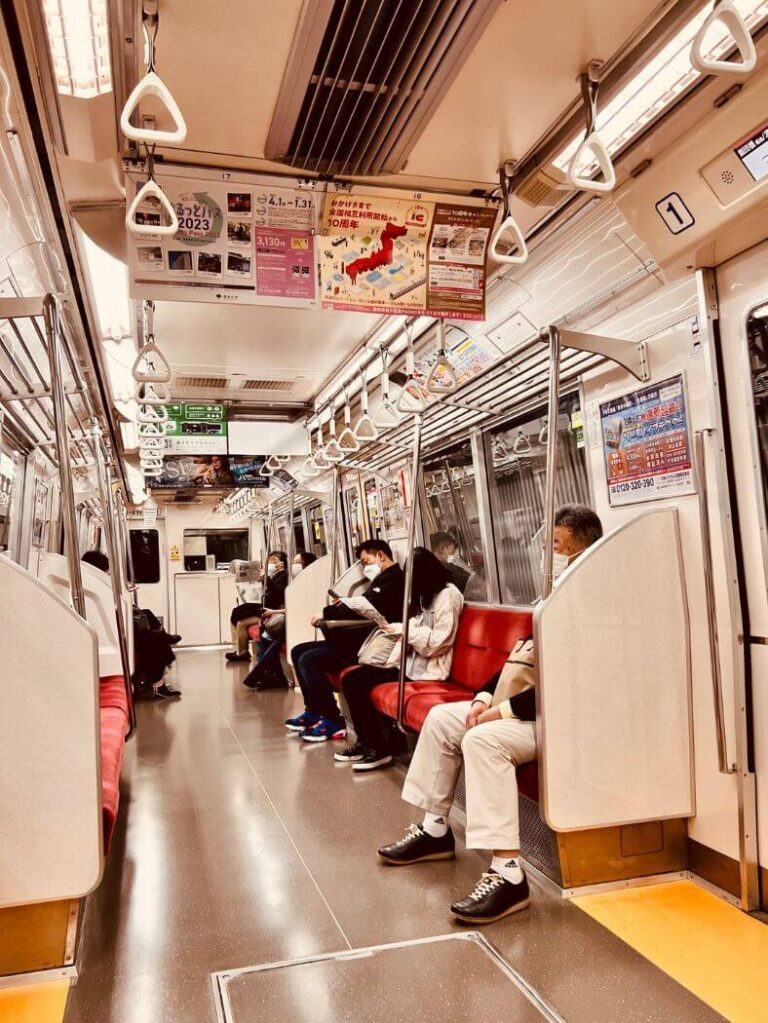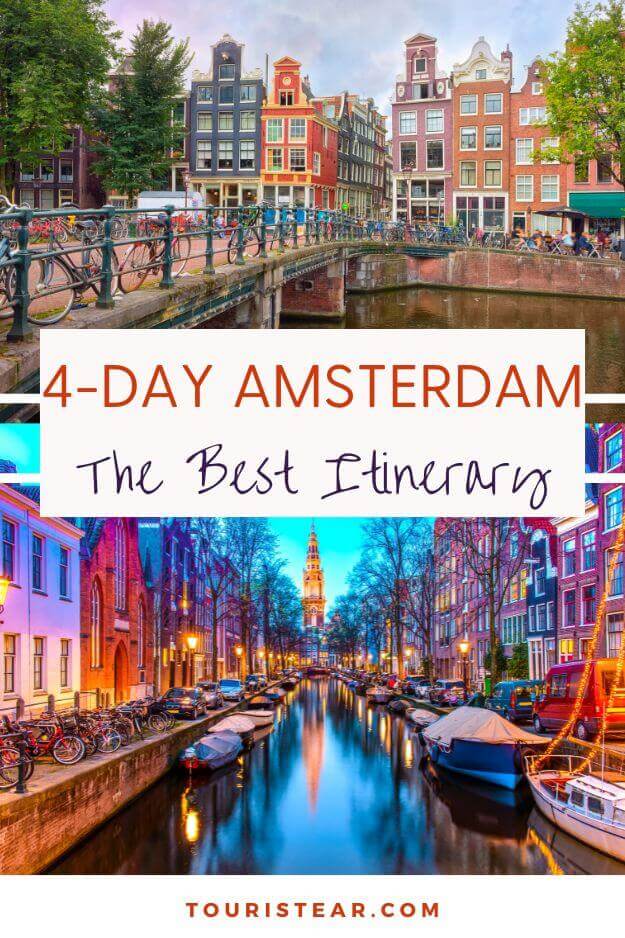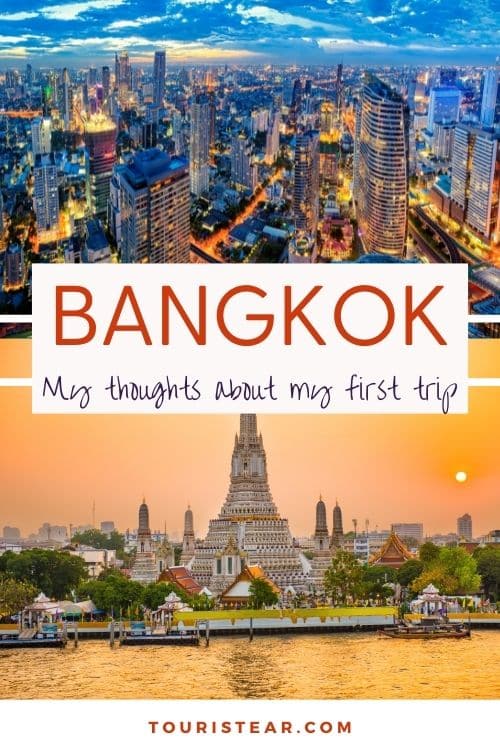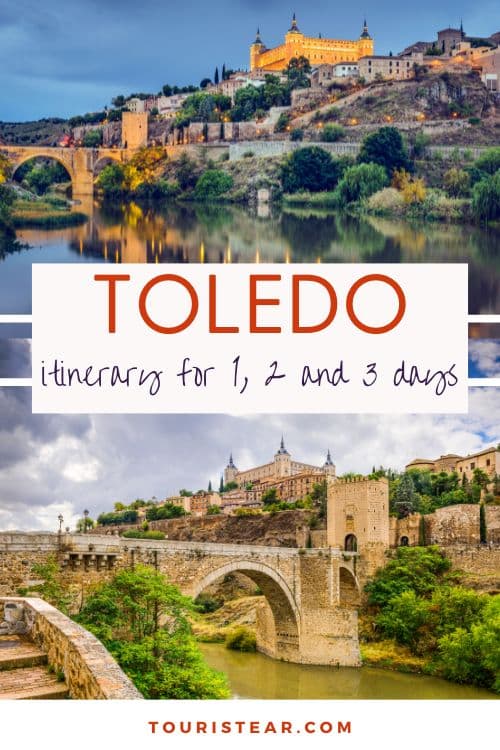11 days in Japan Complete Itinerary
Japan, a fascinating country that perfectly combines history, tradition, and innovation, is a destination that arouses the curiosity of travelers worldwide.
From the flashy lights of Tokyo to the ancient temples of Kyoto, Japan offers a unique experience full of contrasts and wonders. However, with so many stunning places to visit, planning a well-organized itinerary becomes essential to make the most of your trip.
In this article, we tell you about our full 11-day itinerary in Japan and guide you to create your own itinerary or copy ours if it fits your tastes and the time available.
Here, you’ll discover how to group attractions by proximity, optimize your travel time, and make the most of each day.
Whether you are fascinated by traditional culture, delicious Japanese food, cutting-edge technology, or the serenity of gardens, our goal is to help you design a customized itinerary that fits your preferences and guarantees an unforgettable experience in the Land of the Rising Sun.
Get ready to enter the magic of Japan!
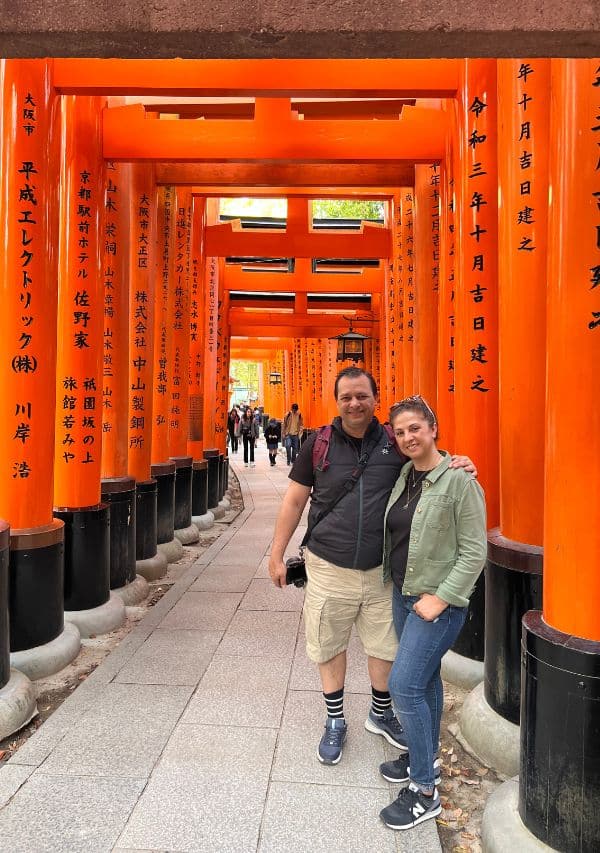
Tips for Planning Your Japan Travel Itinerary
1- Determine the duration of the trip
Determining the duration of the trip is fundamental, although sometimes the duration of the trip is imposed by the number of vacation days we have, we have to know how to make the most of those days:
- Consider your priorities and travel objectives: Before determining the length of your trip to Japan, reflect on what you hope to accomplish during your stay. Do you want to visit major tourist destinations, immerse yourself in the local culture, explore rural areas, and/or enjoy city life? Setting your priorities will help you have a clearer idea of how much time you will need.
- Make a list of places you want to visit: Include specific places you would like to include in your itinerary. Research the attractions, cities, and regions that interest you and evaluate the time you might need to explore each place.
- Consider time availability: Evaluate how many days you have available for your trip to Japan. Consider your personal commitments, such as work, studies, or any other factor that may limit your travel time. Also, take into account the time required for travel to and from Japan.
In our case, it was from Nantes to Paris, overnight in Paris, flight to Tokyo with a 6-hour stopover in Rome. The return was similar, Tokyo – Paris (14.30h) with a stopover in Rome, a night in Paris, and a train to Nantes.
With this, I want to show you that even if you have two weeks of vacation, depending on where you live, you can lose 1 day in your commute. Keep this in mind when planning your itinerary.
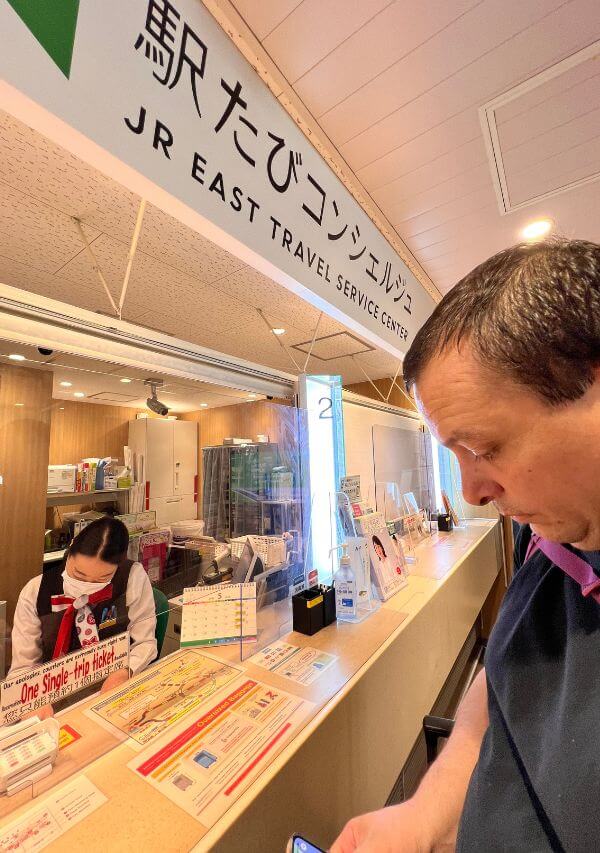
- Consider the travel time required to travel within Japan. If you plan to visit multiple cities or regions, consider the travel time by train, plane, or other means of transportation. Be sure to leave enough room for travel and adjustments to your itinerary.
- Consult travel guides and recommendations like this one or traditional ones like Lonely Planet. For us, ten days is the minimum time to visit some places in Japan; the ideal time is 3 weeks or more! Obviously, you also have to consider your budget.
- Be realistic and flexible: Consider your personal preferences and travel style. Some people enjoy a more relaxed pace and spend more time at each destination, while others prefer to take in more places in less time.
Be sure to be realistic about how much you can see and do in a given period and keep some flexibility in your itinerary to allow for changes according to your interests at the time.
This last point is the most difficult for us, we always (or almost always) write down many more things than we can cover and sometimes we end up exhausted or walking more than 32,000 steps in Kyoto!
In the itinerary below, I will tell you what we did during the trip and give you alternatives and other ideas we had but did not have time for.
*Remember that the length of the trip is a personal choice and may vary according to individual circumstances. Evaluate your personal priorities and constraints to determine how many days will be ideal for your experience in Japan.
2. Research the destination
Before you start planning your Japan itinerary, it is essential to conduct thorough research about the country and its different regions. Skip this step if you are clear about the places you want to visit.
a) Tourist attractions: Research and make a list of the main attractions you wish to visit in Japan. From the majestic Mount Fuji to the beautiful shrines of Kyoto, the country offers a wide range of tourist destinations that will satisfy any type of interest.
b) Events and festivals: Keep an eye out for special events or festivals in Japan during your visit. These unique cultural events, such as Hanami (cherry blossom viewing) in spring or the spectacular fireworks in summer, can make your trip to Japan unique.
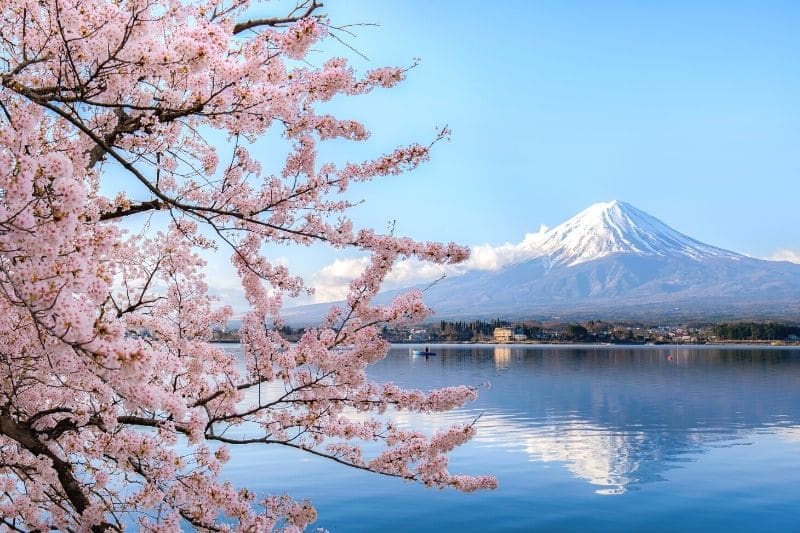
c) Climate and season: Consider the climate and season you plan to travel. Japan has different seasons, each with its own distinctive charm and activities. If you want to enjoy the autumn colors, traveling in October can be an excellent option.
On the other hand, if you are attracted to cherry blossoms, spring is the best time to visit.
d) Transportation: Investigate the transportation options available in Japan. The railway system, such as the famous Shinkansen (bullet train), is an excellent way to get around the country quickly and efficiently.
Also, ensure you know the transportation passes available, such as the Japan Rail, which could save you money on your travels. We will tell you about transportation in Japan in another post to come, for now, have a look here.
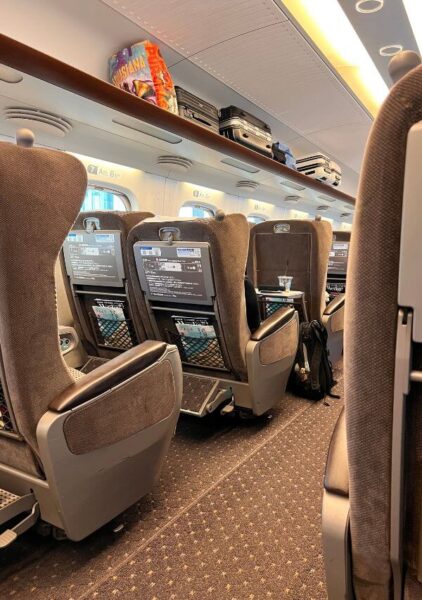
e) Culture and etiquette: Familiarize yourself with some of the cultural norms and etiquette in Japan. It is important to respect local customs and know some basic phrases in Japanese to communicate in a polite and friendly manner.
Doing thorough research before planning your itinerary will help you make decisions and get the most out of your trip to Japan.
Remember that everyone has different interests, so customize your trip according to your personal preferences to create an itinerary that suits your tastes and desires.
3- Establish priorities
Identify your priorities and those of your companions ;). Once you know your tastes and preferences and those of the people traveling with you, it will be much easier to create an itinerary.
For example, if you like history, prioritize museums and historical sites, if you like manga/anime, prioritize visiting Akihabara in Tokyo or the Manga Museum in Kyoto, if you like gastronomy make a list of restaurants or foods you want to try.
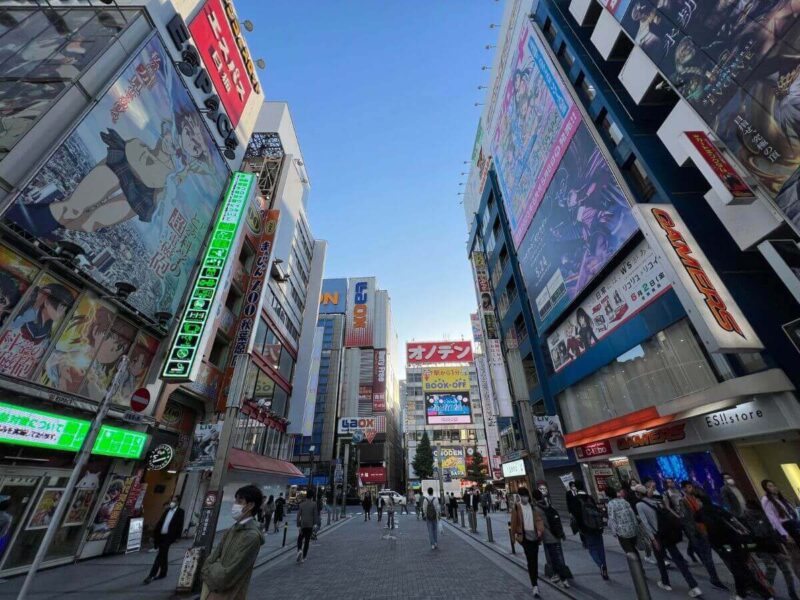
4- Group places by proximity
By grouping visits by proximity, you will save travel time and optimize your itinerary.
5- Time – Duration of the visit
Calculate the time you will allocate to each visit or attraction, considering the opening and closing times.
Take a look at the Printable PDF travel planner
6- Flexibility and free time
Give yourself a break! Leave blank space in your itinerary to rest, adapt to unforeseen events, and to discover places that were not planned.
7- Pace of travel
Consider the pace of the trip and avoid overloading the itinerary with too many activities or visits. Leave time to relax and enjoy the surroundings.
8- Transportation and lodging
Book your accommodation in advance to get the best prices in places that interest you.
Regarding transportation, find out how to get to the sites, for example, shinkansen (bullet train) for trips between cities, subway or bus for visits to the city or town.
In the case of the Shinkansen, I recommend making your seat reservations once you are there and have decided on the dates. See if it’s worth the investment in the Japan Rail Pass or you will only need one or two train tickets.
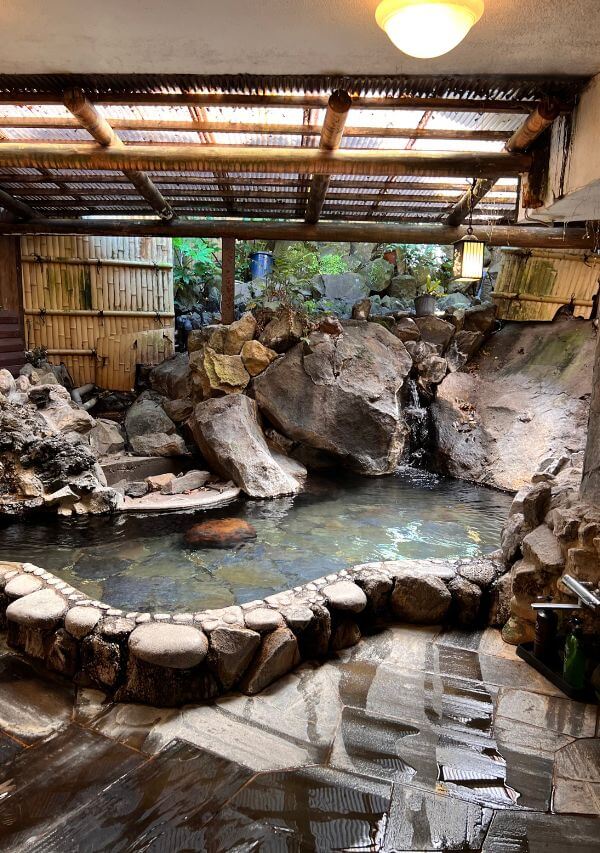
9- Maps and digital tools
The apps we used during our trip were Google Maps, Papago translator (which makes more accurate translations than Google Translator), Surfshark (VPN), and in the wallet of the cell phone we had the Pasmo Card (transport card).
10- Checks and adjusts
Check and adjust your itinerary before and during the trip, considering the weather, changes in the schedule of attractions, or recommendations made by locals.
Itinerary of 11 full days in Japan
Our 11-Day Japan Itinerary includes Tokyo, Hakone, Kyoto, Osaka, Hiroshima and Miyajima. I will tell you in detail below how we managed to visit all these places in such a short time.
- Day 0. Home – Tokyo
- Day 1 to 3. Tokyo
- Day 4 to 5. Hakone
- Day 5 to 8. Kyoto
- Day 8 to 9 Osaka
- Day 9 to 10. Hiroshima and Mijashima
- Day 11. (Osaka) Tokyo
- Day 12. Tokyo – House
Detail of the Itinerary to Japan
In this section I detail the visits we made each day in Japan, in other posts, I will tell you in much more detail. But if you have any questions, leave them in the comments, and I will get back to you as soon as possible.
Day 0. House – Tokyo
This is a long and tiring day; depending on where you live, it may be longer or shorter. If you arrive in Japan in the evening, try to go to bed at a reasonable time from there, for example, at 11 or 12 o’clock at night.
Do not nap and try to adapt to the Japanese schedule from the first day.
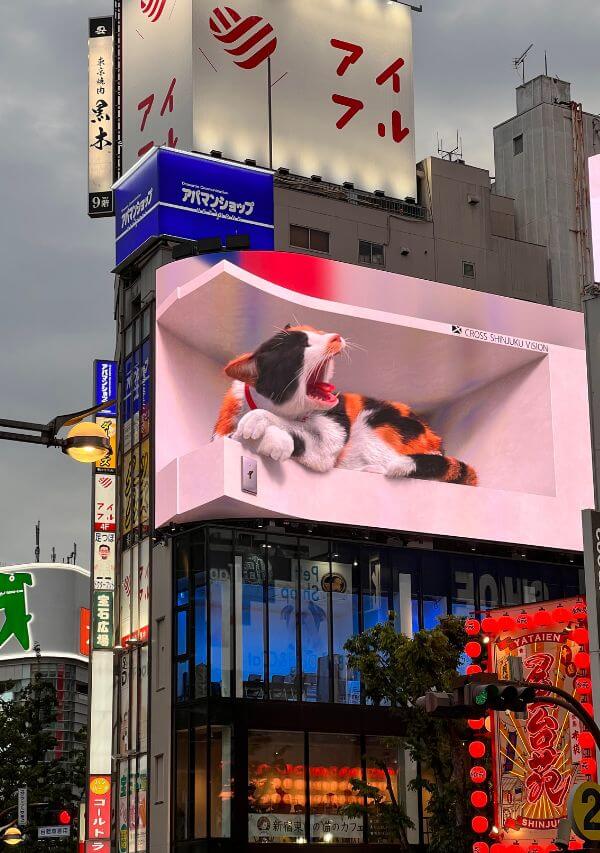
Day 1 to 3. Tokyo
Day 1 Tokyo, Shinjuku
In our case, we stayed in Shinjuku, so our first visits were in this area. We visited:
- Hanazono Shrine
- Shinjuku Goen National Garden
- Shinjuku City Hall Observation Deck at night (Free Observation Deck)
- Omoide Yakocho (Piss Alley) (Afternoon and evening)
- Kabukichō
Day 2 Tokyo, Asakusa, Akihabara and Shibuya
- Senso-Ji. Start your visit at Kaminarimon and walk along Nakamise Street until you reach the temple. Walk through the gardens, check your luck with the “mikuji”.
- Visit the Skytree or the Asahi Brewery, walk through Sumida Park, and take pictures of these peculiar buildings from in front.
- Stroll along the subway street of Asakusa
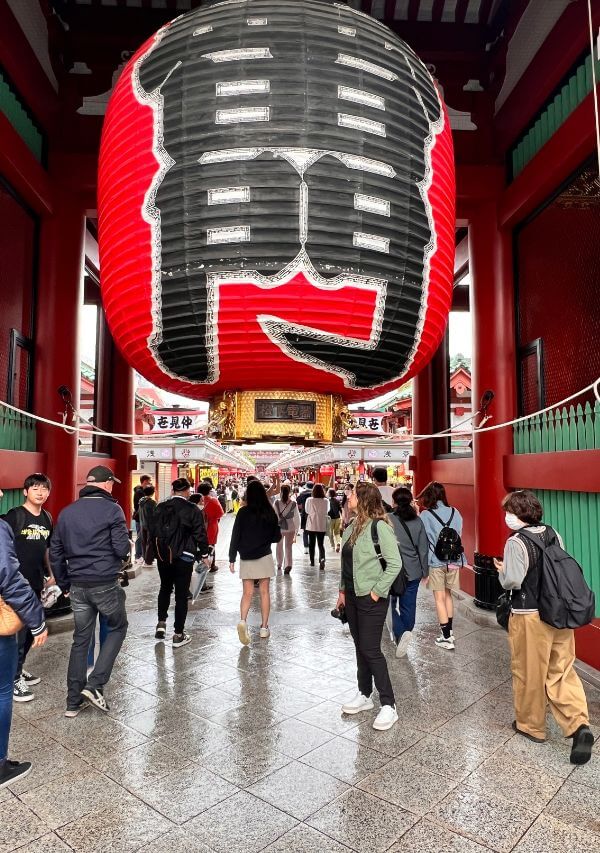
Then, head to Akihabara and discover another side of Tokyo, a quite different one.
- Visit a pachinko saloon, if you don’t like to play, just go in to browse and that’s it.
- Visit the computer stores
- Enter the manga stores
- Buy bizarre souvenirs
- Have a drink in a maid café
In the evening, head to Shibuya, and from one of the buildings, take a look at the busiest intersection in the world.
We went up to the “Shibuya Crossing View,” and they charged a fee to access the viewpoint.
Nearby is the Hachiko statue and many stores. There are several thrift stores for luxury brands, and there is a store in the magnet building for fans of One Piece.
Day 3 Tokyo, Meiji-Jingu, Harajuku, Omotesando and Shibuya
In the morning, we visited the Meiji-Jingu temple, an oasis in the middle of Tokyo’s madness.
Then we walked to Harajuku, we continued to see the most extravagant stores.
We ate at Kumada, a place that serves fish bowls with rice. The food was excellent, and I highly recommend it if you go there. The menu was in English and Japanese, but we were the only foreigners there.
We then walked to Omotesando, the chic area with the most impressive luxury stores in Tokyo.
From there we went back to Shinjuku, had dinner, and went to sleep because the next day we had to get up early to go to Hakone.
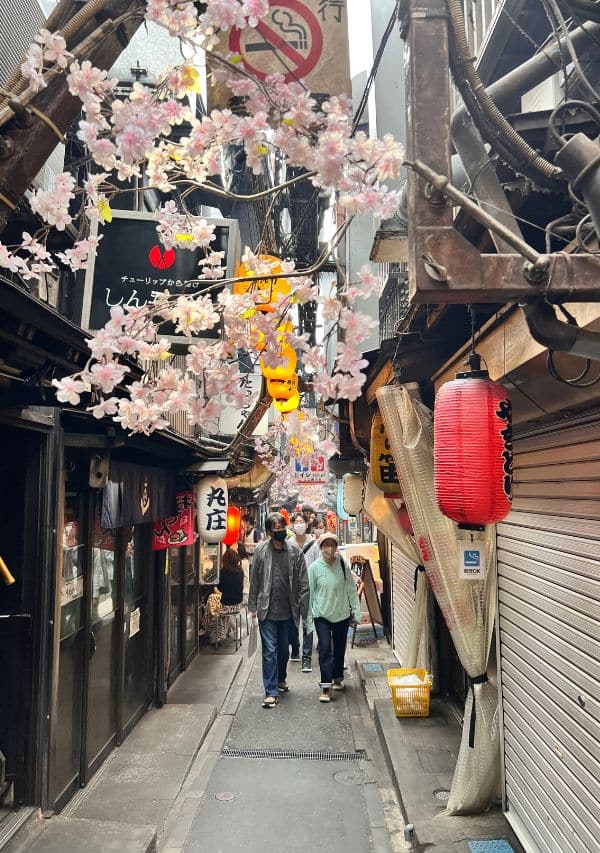
Day 4 to 5. Hakone
We went to Hakone by train with the 2-day Hakone Pass. It includes a round trip to Tokyo by train, all transportation in Hakone (you will use it), the cable car, and the pirate ship. Undoubtedly, a must-visit place from Tokyo.
Note that the bus in Hakone or from Odawara (where the Shinkansen station is located) charges the fare depending on where you get on the bus. That is to say, the more stops the price goes up and quite a lot.
In Hakone we stayed from 2 pm, spent the night, and left the next day for Kyoto, our Shinkansen was leaving around 4 pm.
The first day we ate at a Korean restaurant close to the ryokan we were staying at.
From there we took the bus to the port to board the pirate ship that took us to the lake and the cable car stop.
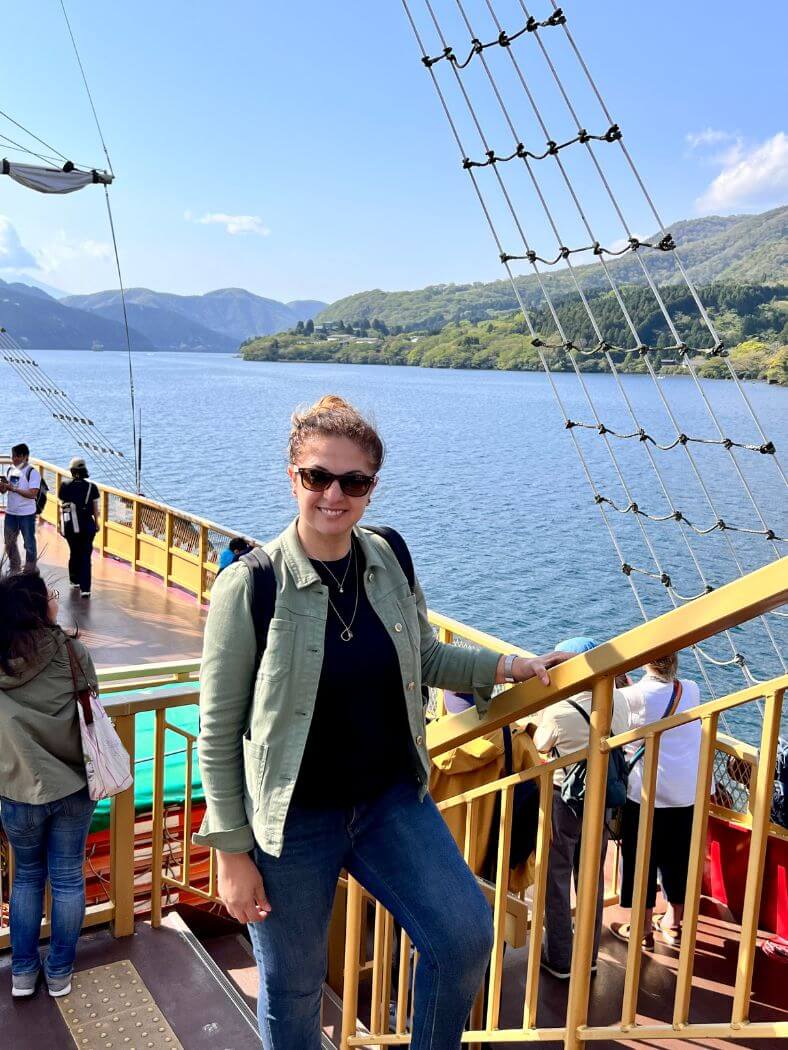
The cable car has several stops, the first one for a hiking route. The second is in Owakudani, where there are sulfur chimneys and you can see Mount Fuji. Here it is typical to eat black eggs, it is quite particular.
From here, you can continue up to the cable car, and you have two options: continue up or go back to the boat and turn around. We took the cable car and, from there, took the train to the Ryokan to take a bath in the private Onsen.
The next day, we went to Amasake tea house, we tried the non-alcoholic amasake, a sweet drink, that you have to try, but I’m not crazy about it, hehehe.
The site is definitely worth a visit.
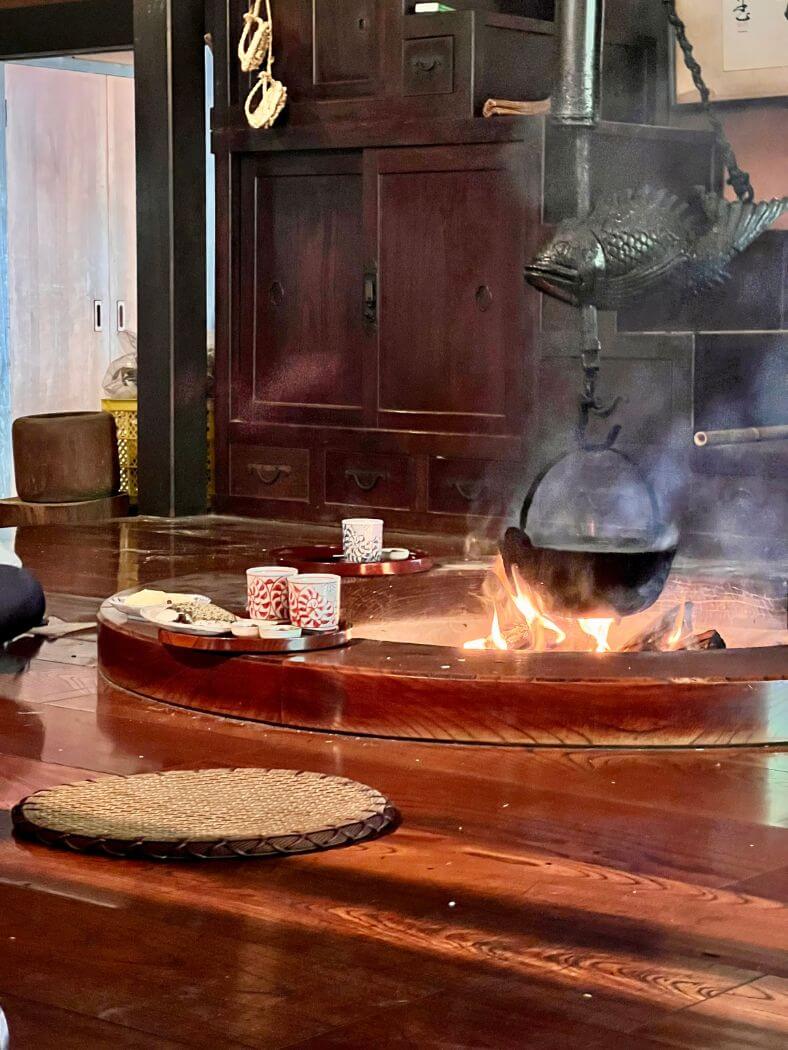
Then we walked from there, the old Tokaido road, it is a bit tiring, there are quite a few slopes, but it is worth it.
We walked to the park where the Hakone temple and the torii in the water are located. It is very nice but it was very crowded.
You can visit Hakone with a guided tour from Tokyo if you prefer going with a guide.
Day 5 to 8. Kyoto
Day 1 in Kyoto (arrival in the afternoon)
We went from Hakone to Kyoto by Shinkansen, as it was high season (Golden Week) there was only one train available leaving at 4 pm.
We arrived to spend the evening in Kyoto.
We visited the bridge of Memoirs of a Geisha and then the Pontocho area.
We visited the geisha district, it is dead at night.
We stayed at the M hotel, which is quite centrally located on the corner of the metro. We could walk almost everywhere.
Day 2 in Kyoto
6.30 am Fushimi-Inari Taisha Shrine. Avoid crowds by going early in the morning. We started going up at 6.30 a.m. and there were already some people, but when we went down around 8 a.m., the amount of people was impressive.
It’s an early start, but you’ll thank me later. Moreover, if getting up early is not a problem for you, see what time the sun rises and enjoy the sunrise.

9.:30 Kiyomizudera Temple. It was impressive how many people were already there at this hour.
Higashiyama District
10:30am: Sannen-zaka and Ninnen-zaka, and the Maruyama-koen park.
Hokan-ji (Buddhist Temple) we stopped by to take a picture.
11.30 Kennin-ji Temple (10h00 – 17h00)
Tour the Gion district, Kyoto’s traditional geisha area. We ate in Gion, I leave you a picture of the facade because I do not know how to tell you what it is called.
They had several menus, including vegetarian, they were not very nice service, but it was tasty and well priced, for what Kyoto is, which is the most expensive city we visited on the trip.
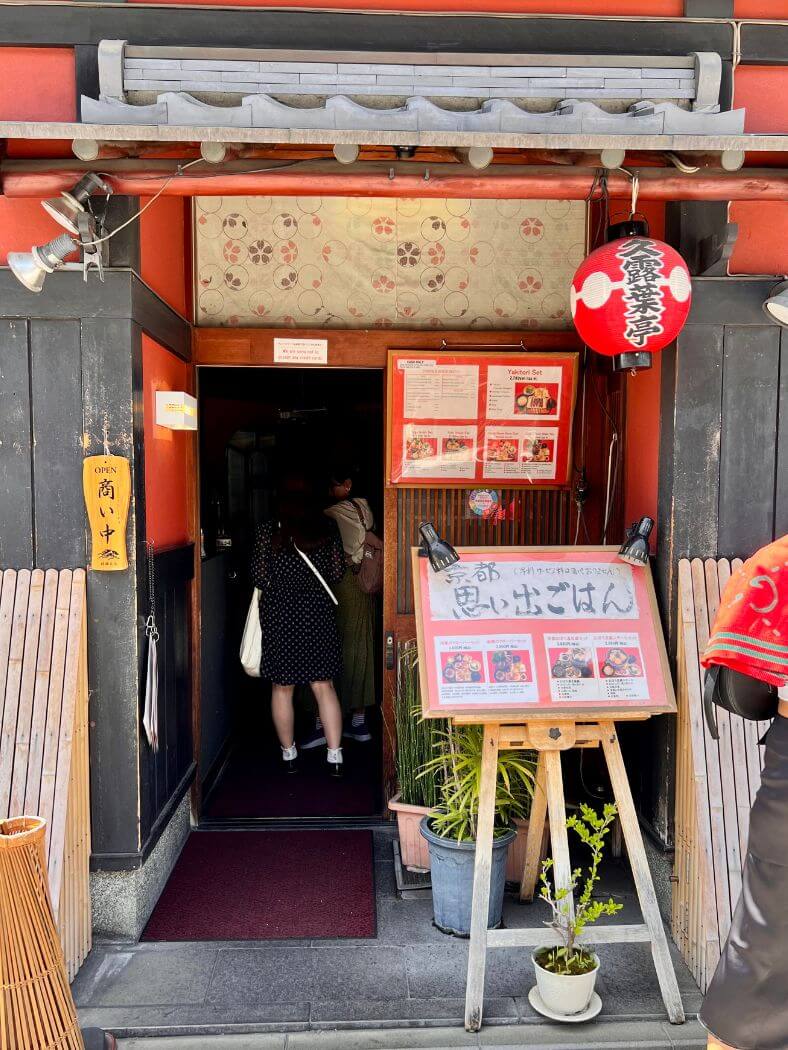
These three temples are very close, we made a rather passing visit to all three, but since we were there, we had to go…
- Yasaka Jinja (24h)
- Chion-in temple (10h00 – 16h20)
- Shoren-in Temple (09h00 – 16h30)
15.00 International Manga Museum (11h00 – 17h00)
If you are not interested in manga, you can visit the Kanji Museum, the explanations are unfortunately only in Japanese.
If you like manga, the museum is to go to have a good time, it has different reading rooms, you can pick up a manga that interests you, they have a section in several languages, you can see mangakas drawing, there are workshops for children.
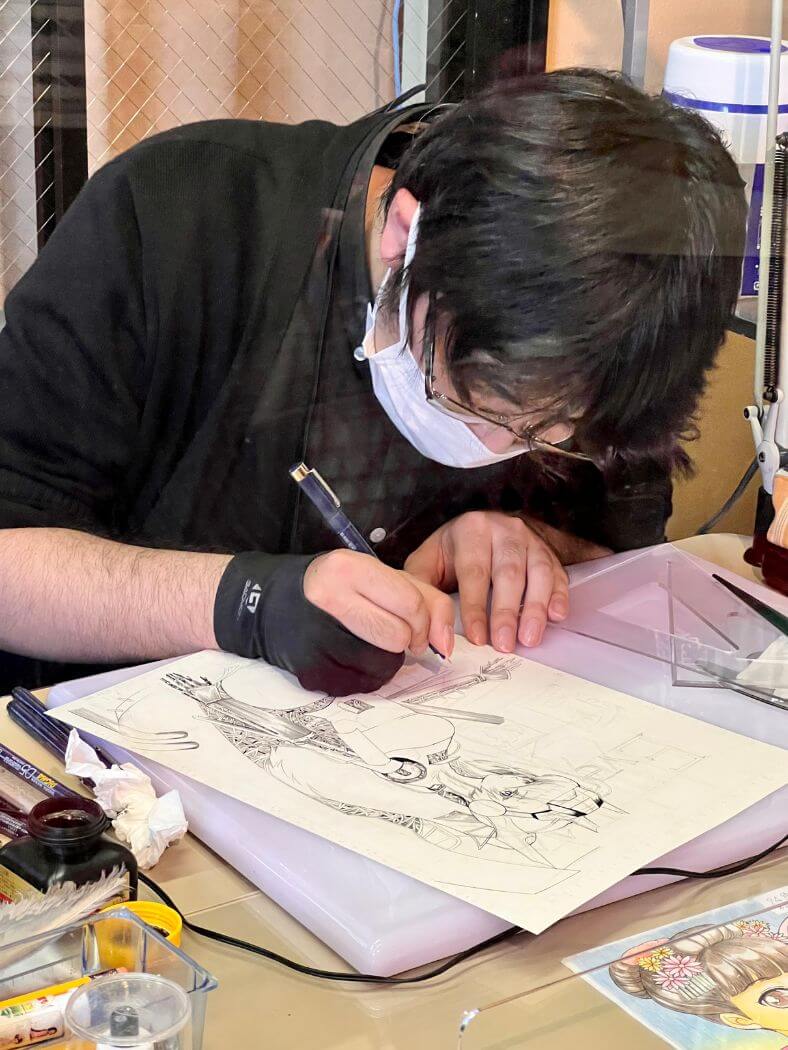
And of course, you will learn about the history of manga from its beginnings to the present day and the places where it is most read in the world.
Then we rested until about 7 pm and went for sushi for dinner.
*Today, we did everything on foot except go to Fushimi-Inari. It was a thrashing day, we walked more than 32,000 steps, including climbing Mount Inari. If you have time, I would recommend that you split the day in two or skip a few temples or the manga museum and rest!
Day 3 in Kyoto: North Kyoto & Arashiyama
We took the train to Arashiyama, about 30 minutes from Kyoto, in the morning. You can visit on your own or with a guided tour, as you prefer.
9.30 am Togetsukyo Bridge, from here the idea was to go to the bamboo forest, but we went to the wrong bank and ended up at a wonderful Zen-Buddhist temple. Small, at the top of the hill, with incredible views.
It was an unexpected experience that we loved. But if you’re looking to go straight to the bamboo forest, it’s on the opposite bank of the monkey park.
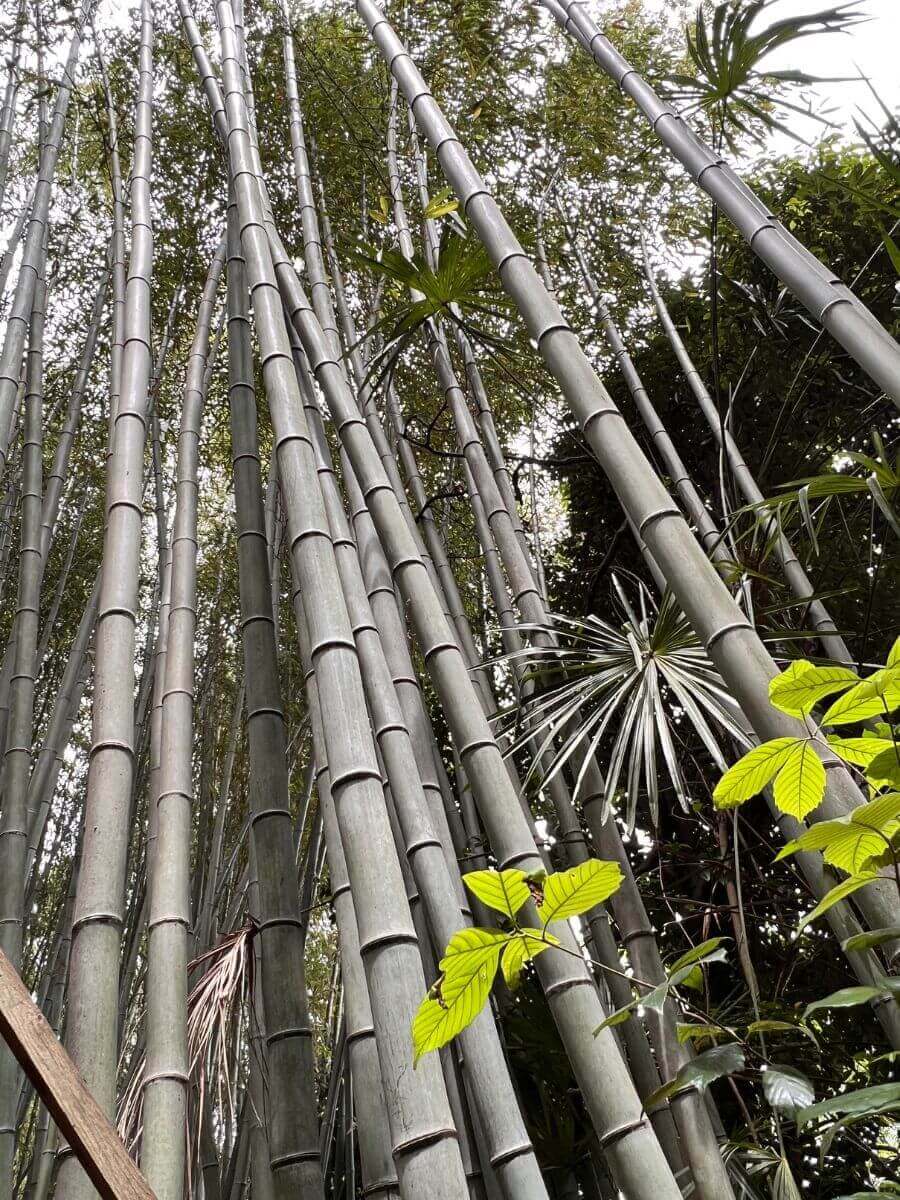
12.00 Ryoan-ji, we visit the most famous dry zen garden there is, the schedule is from 08h00 – 17h00. Honestly, I liked it, but I don’t know if it’s worth the detour we took to get there. If I could repeat, I would stay and enjoy Arashiyama longer.
14.00 Kinkaku-ji, the golden temple is an impressive building in an ideal setting. The bad thing is that you can only visit it from the outside and there are too many people.
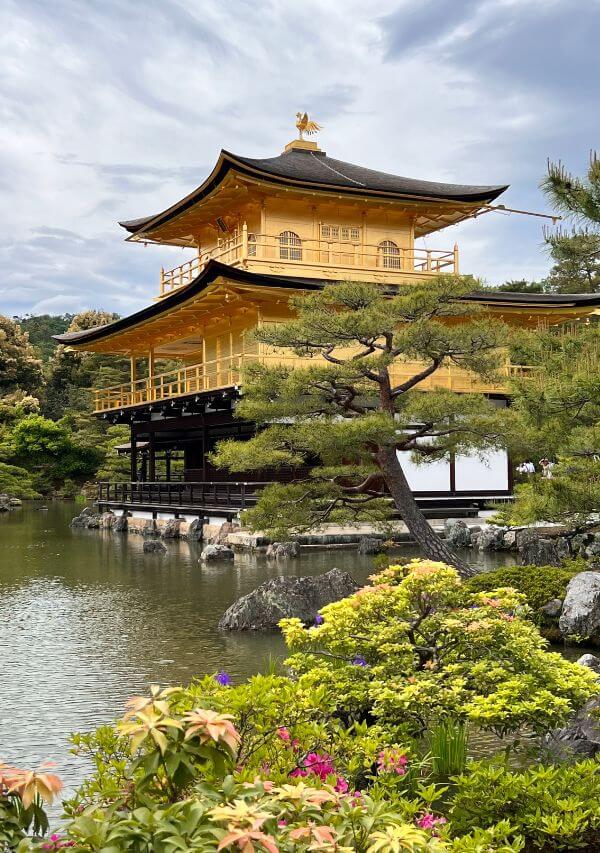
It is open from 9 am – 5 pm.
5 pm Kimono Tea Ceremony. One of the cultural experiences you can have in Kyoto is the tea ceremony. I loved it, I recommend it. We went with Maikoya Kyoto.
19.00. Nishiki Market, we walked around and had a sushi dinner at Sanjo-Dori Street.
In the evening, we walked around the Pontocho area.
Day 4 in Kyoto
9.30h – Nijo-jo Castle
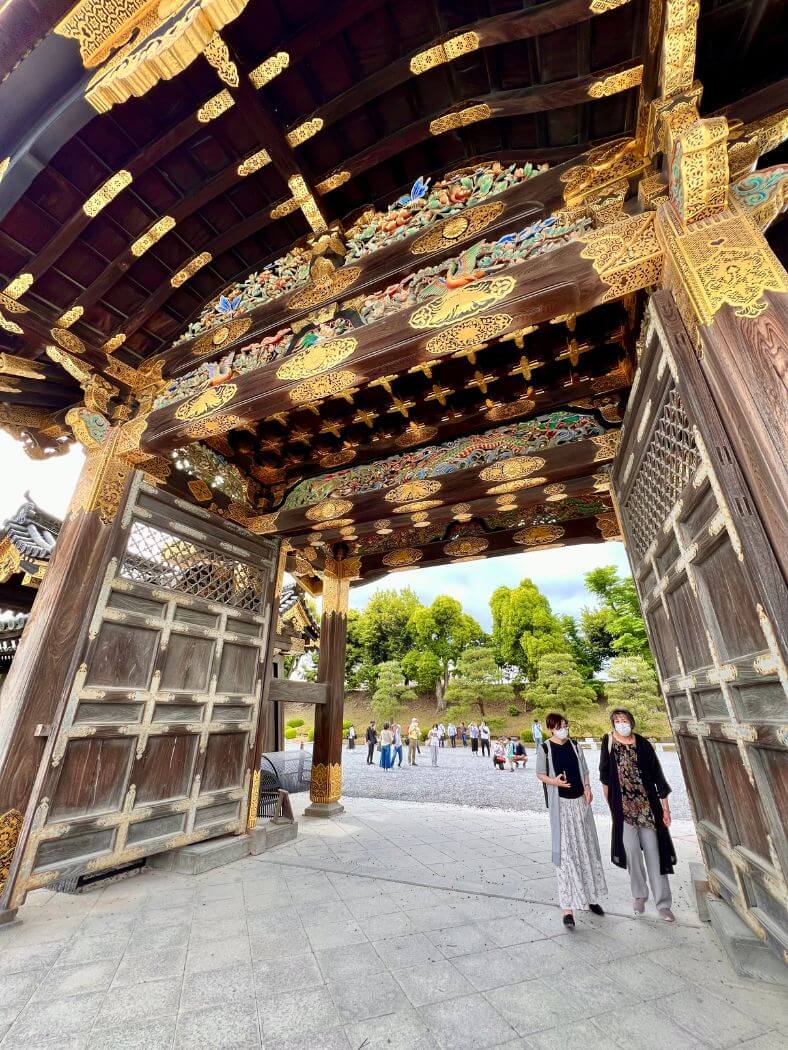
12.00h – Ginkaku-ji or silver pavilion
14.00 – Philosopher’s Way
14.30 – Heian Jingu Shrine and Giant Torii
16.30 – Coffee with kittens. I didn’t like the experience; it seemed to me that they exploited the animals to entertain people. I thought it was something else.
6 pm heading to Osaka, it is only 15 minutes by Shinkansen or one hour by normal train.
Day 8 to 9 Osaka
Day 1 Osaka at night
We arrived in Osaka in the evening and had dinner at an excellent and inexpensive steak place. Of course, they spoke almost no English. But it was a magnificent experience, if you go to Osaka, I recommend you to go.
Name of the restaurant: Yakiniku Manryo (Tosobari) and the address is Japan, 〒550-0001 Osaka, Nishi Ward, Tosabori, 1 Chome-6-10 土佐堀トキワビル 1F (I copied it directly from Google).
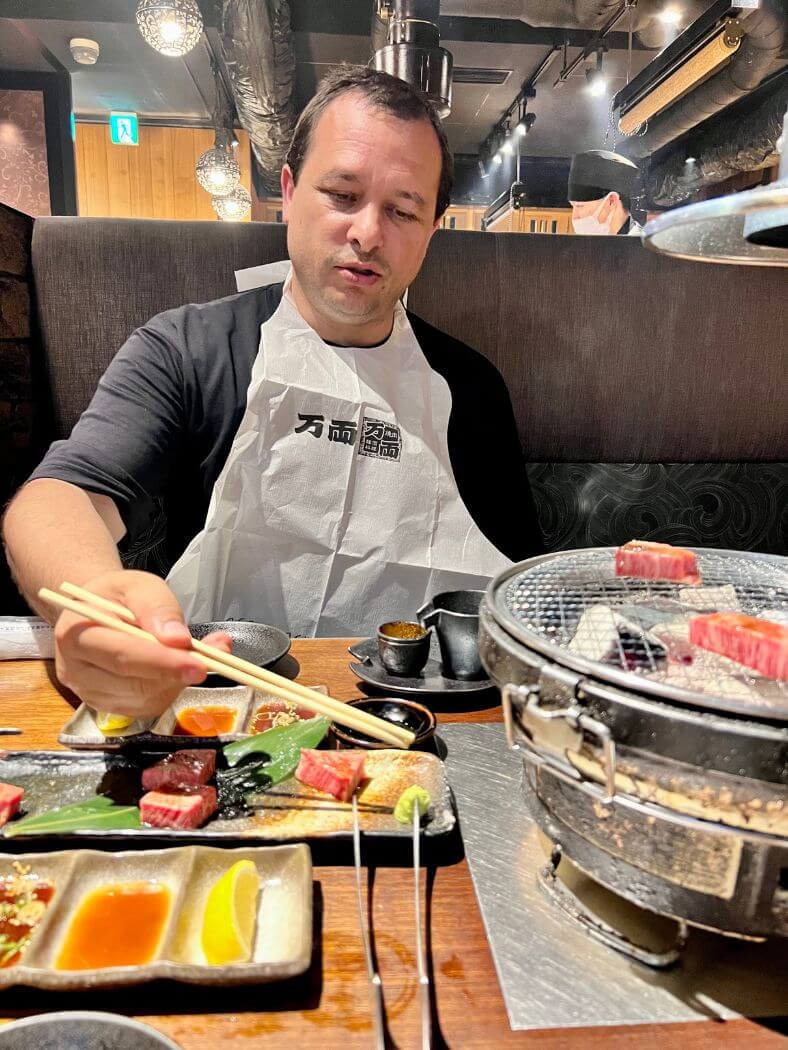
Day 2 in Osaka
That day, it poured and didn’t stop raining from morning to night. It was impressive… So, we adapted the itinerary a bit to the rainy day.
Osaka Castle in the morning
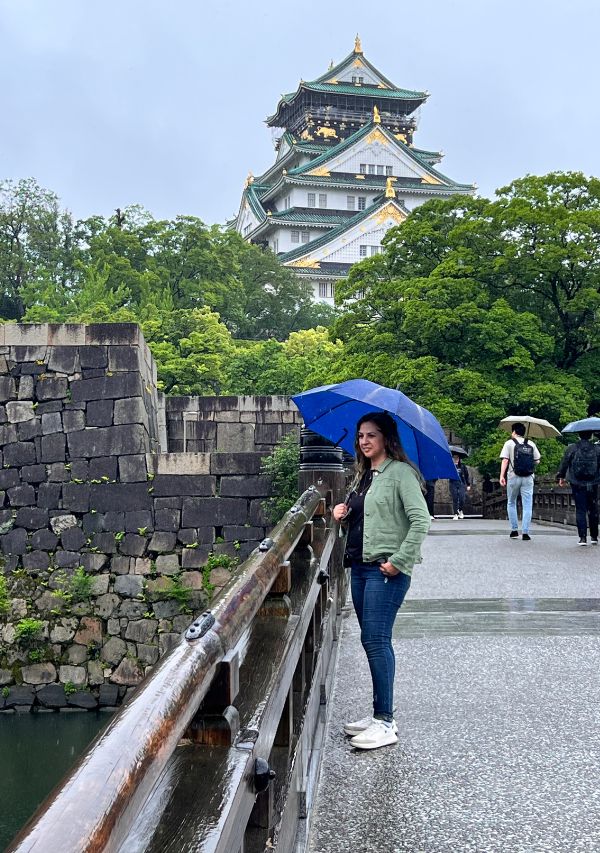
Osaka Kuromon market, we ate on the way back, in a small ramen place that we loved, it is called Ippachi ramen, you have to place your order in a machine, it is very easy, it has photos.
Then we spent the afternoon in the Namba area, Dotombori, and Tenjinbashi-suji with covered galleries, cafes, and curious places to spend the afternoon and take pictures.
Day 9 to 10. Hiroshima and Mijashima
This day is to be arranged as it suits you best. If you have enough time, you can stay overnight in Miyajima. Also keep in mind the tide schedule, during our trip, high tide was in the morning, so we visited Miyajima first and then Hiroshima.
Miyajima is a sacred island and one of the most beautiful places in Japan. During high tide you can see the giant Torii that seems to float on the water.
We visited the Torii area, then went up in the cable car and enjoyed a wonderful view of the coast, the islands, and Hiroshima from afar.
We had lunch here and then took the ferry back to Hiroshima.
Hiroshima: we visited the Peace Museum and the Peace Memorial Park.
We dined Okonomi – yaki a very rare ramen dish, it looks like a kind of ramen omelet with mayonnaise and barbecue sauce. It is one of those things you must try, let me know if you like it!
Then we returned to Osaka to sleep and the next day we left for Tokyo.
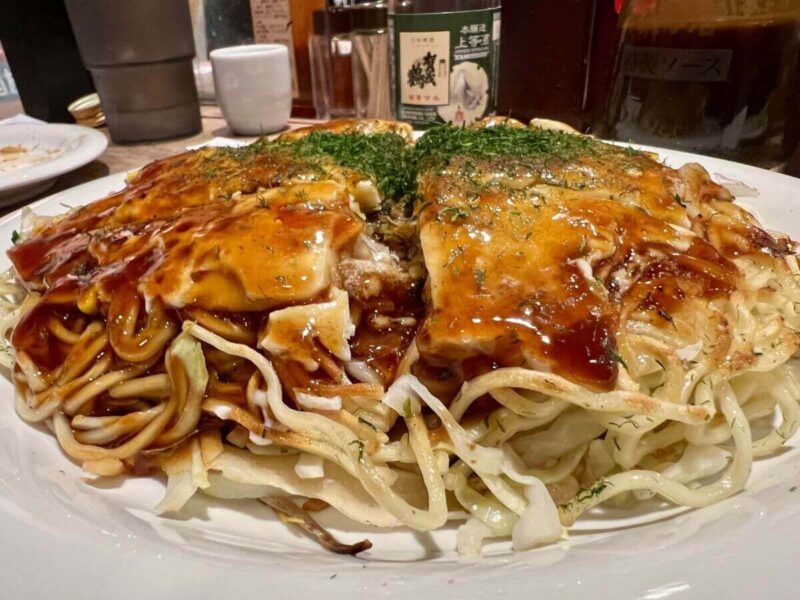
Day 11. Tokyo
We left at 6:30 a.m. on the Shinkansen for Tokyo, the trip took about 3 hours.
This day we stayed in Akihabara and visited some of the places we had left pending such as:
- The gardens of the Imperial Palace in Tokyo
- Tokyo Tower
- On the way back to Akihabara, we ate nothing because it was already late.
- In Akihabara, we visited Don Quijote and some more geek stores.
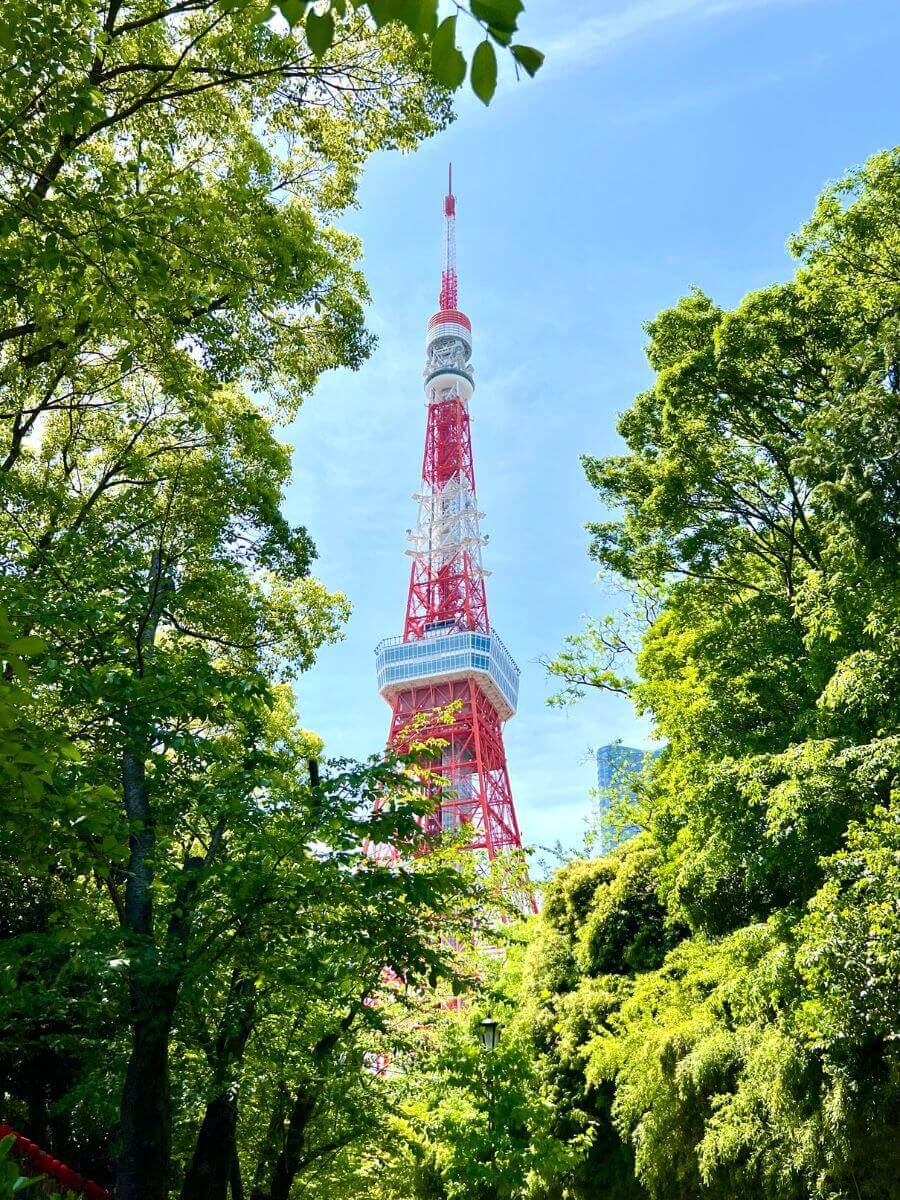
Here we had dinner at a fantastic place called Gyukatsu Motomura, it is down some stairs and apparently, there is usually a queue, we waited about half an hour, it is worth it, if you like meat, of course.
I am leaving you the photo because the name in our letters and in Japanese is not very similar…
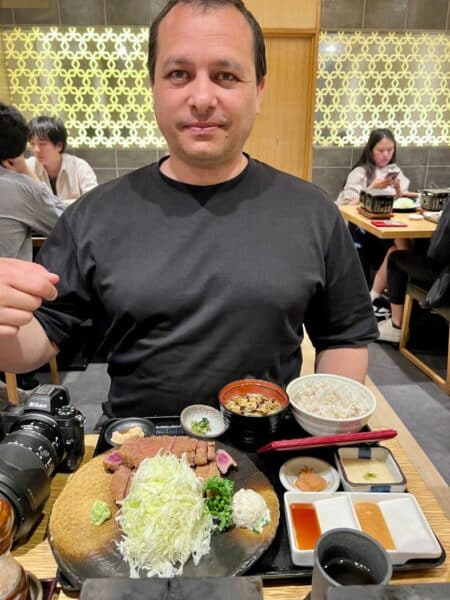
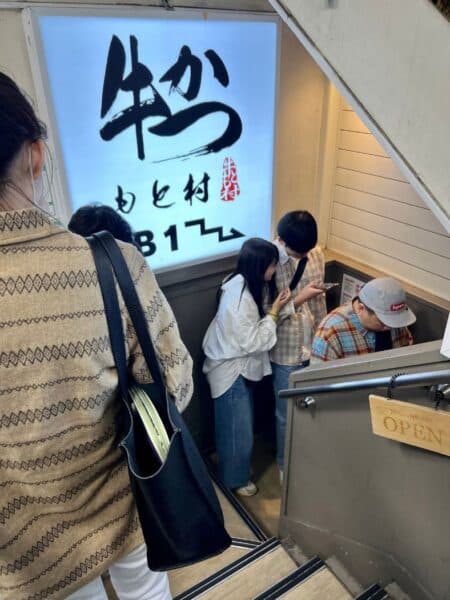
Day 12. Tokyo – Home – Flight recommendation
We left Tokyo in the morning and had a magnificent long flight with ITA Airways.
If you have read this far, I recommend you to take a look at this airline when you are looking for flights, because they are promoting flights from Rome and we got less than 600 € per person from Paris with a stopover in Rome.
We booked the flight exactly 5 and a half months in advance. I recommend that you buy your tickets well in advance, at least 5 or 6 months, and put an alert on Skyscanner.
I will continue to create posts with all the necessary information for your trip. I will be adding them where appropriate in this article and here below.
Plan your trip to Japan
- VPN to connect to the Internet in a secure way
- How to plan a trip to Japan
- Some phrases in Japanese for your trip
Last Updated on 29 January, 2024 by Veronica
Disclosure: Some of the links on this post are affiliate links, meaning at no additional cost to you, I may earn a small commission if you click through and make a purchase.
Author: Veronica
Vero, a seasoned traveler, has explored 25 countries and lived in five, gaining a rich perspective and fostering an infectious passion for travel. With a heart full of wanderlust, Vero uncovers the world’s hidden gems and shares insights, tips, and planning advice to inspire and assist fellow adventurers. Join Vero and let the shared passion for travel create unforgettable memories.
